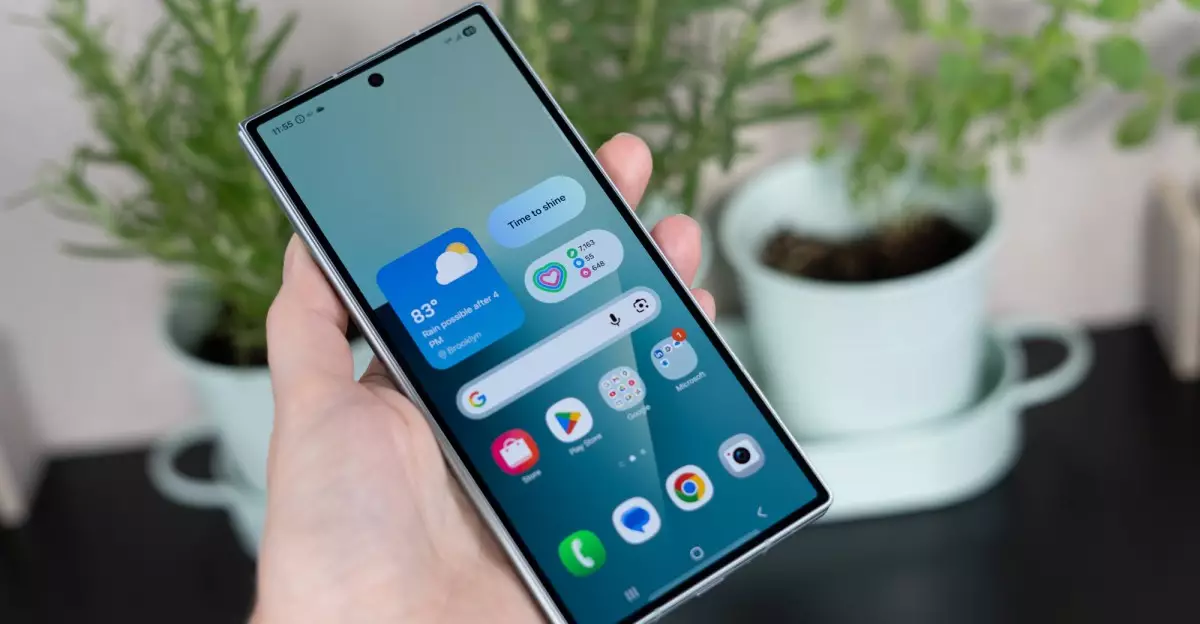In an era where smartphones are becoming ever more powerful and features increasingly sophisticated, Samsung’s latest flagship, the Galaxy Z Fold 7, pushes the boundaries of what a mobile device can do. While the device’s premium price tag might give pause, it underscores a broader shift in technology—where flexibility, design, and multitasking converge in a single device. This foldable marvel isn’t just a phone; it’s an assertion of where the future of mobile computing is headed.
The design advancements alone make the Z Fold 7 compelling. At just 8.9mm thick when folded, it challenges preconceived notions of foldable phones as bulky or unwieldy. The improved form factor seamlessly blends a sizable outer display—now 6.5 inches, up from 6.3 inches—with the convenience of a traditional smartphone. When unfolded, the device transforms into a mini tablet, providing additional screen real estate that enhances productivity, gaming, and media consumption. Unlike previous generations, the Z Fold 7 feels more akin to an everyday device rather than an experimental gadget, offering a tangible step towards mainstream acceptance of foldable tech.
Yet, despite these design strides, the core performance remains largely incremental compared to its predecessor, the Z Fold 6. This suggests Samsung is focusing more on refinement—thinness, usability, and user experience—rather than sheer power. This shift indicates a maturation of foldables; they are no longer just about novelty but about delivering meaningful improvements that impact daily use. The Z Fold 7’s larger outer display blurs the lines between phone and tablet, offering a more familiar feel in a foldable form factor—a strategic move to appeal to users who want both portability and productivity at their fingertips.
Addressing the Price Conundrum and Value Proposition
The elephant in the room remains its eye-watering $1,999 starting price. Samsung’s high-end devices often provoke debate on value, and the Z Fold 7 is no exception. For most consumers, this is a significant financial commitment, positioning the device in a luxury tech space. Such pricing naturally raises skepticism—can it really justify the expense? The answer lies in understanding the device’s unique appeal: versatility and innovation that no other phone currently offers.
However, Samsung anticipates this concern by offering a range of lucrative pre-order promotions and trade-in incentives. These promotions can slash the effective price dramatically—trading in an older flagship like the Galaxy S21 or even the last-generation Z Fold 6 can cut the price by up to $1,000. This trade-in credit works instantaneously when purchasing through Samsung’s site, making the initial outlay far more palatable. Carriers like AT&T and Verizon are also pitching in with extended installment plans and hefty trade-in credits, often running up to $1,100, which can ease the financial burden over several months.
But here’s the catch: these promotions are fleeting. The pre-order incentives, including the $50 Samsung accessory credit and additional store-specific deals, will evaporate once the device hits shelves. It’s a calculated marketing move that encourages early adoption, yet it demands swift decision-making from prospective buyers. This strategy underscores an important lesson—while the Z Fold 7 is a marvel, its true value can only be appreciated by those willing to navigate the complex web of promotions, trade-ins, and carrier plans.
The Race for the Best Deal: Navigating Promotions and Retail Strategies
As with any high-priced flagship, the pathway to savings lies through strategic shopping. Samsung’s direct online store offers exclusive perks like a $50 credit for accessories and an additional $300 “use-it-or-lose-it” bonus—if you don’t spend it during checkout, it’s gone. This incentivizes immediate purchasing decisions and often nudges consumers toward bundled accessories such as the Galaxy Watch 8, earbuds, or cases, effectively enhancing the device’s ecosystem.
Retailers like Amazon and Best Buy are sweetening the deal even further by including no-charge upgrades to the 512GB model or gift cards worth hundreds of dollars. For tech aficionados who prioritize storage, purchasing through these outlets can significantly maximize value. Meanwhile, carriers such as T-Mobile, Verizon, and AT&T have their own strategies—some offering no upfront cost in exchange for prolonged installment plans or trade-in deals. These plans are designed to lock you into their ecosystem, which could be advantageous or restrictive depending on your loyalty or preferred provider.
Yet, the stipulations are stiff. With carrier plans, you may need to commit to specific unlimited data packages or installment arrangements, which could limit flexibility down the line. It’s a delicate balancing act: genuine savings are available if you navigate the promotions smartly, but they require promptness and a bit of strategic forethought.
Is the Z Fold 7 Worth the Investment?
At its core, the Galaxy Z Fold 7 symbolizes what it means to embrace innovation wholeheartedly. It embodies the evolution of form factor, merging the convenience of a smartphone with the expansive capabilities of a portable tablet. For early adopters and tech enthusiasts willing to overlook its hefty price tag, it offers a glimpse into the future of mobile computing—where flexibility and functionality define the user experience.
Nonetheless, its value proposition is not purely about raw specs or unprecedented performance. Instead, it’s about the experience: the thrill of owning a device that morphs your digital footprint into something more adaptable, more dynamic. While no device is perfect, the Z Fold 7 signifies a bold leap towards a more versatile, user-centric mobile landscape. For those ready to invest not just in a device but in a new way of thinking about smartphones, Samsung’s latest foldable is undeniably worth considering—if only for the pioneering spirit it represents.

